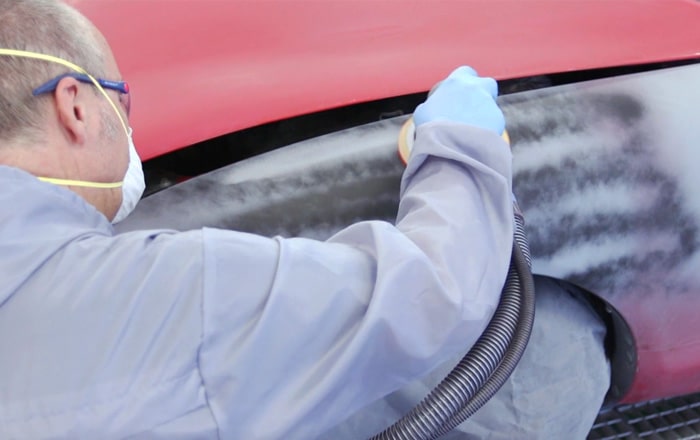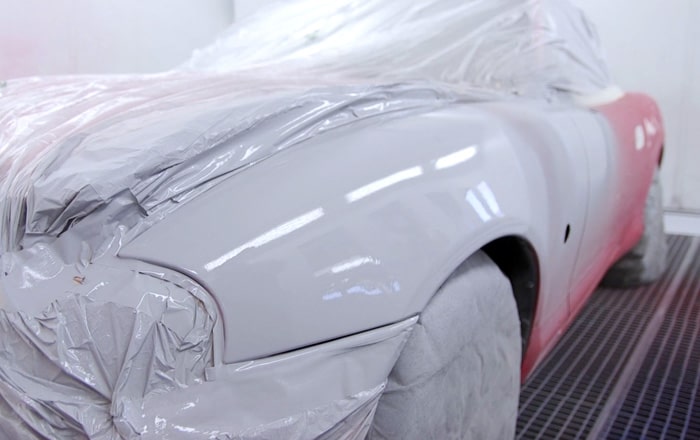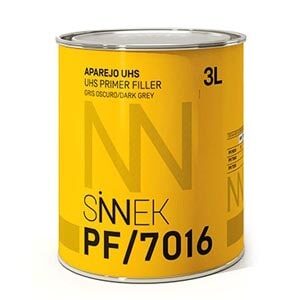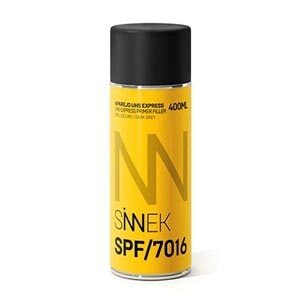
Car filler is a commonly used product in bodyshops, and its preparation, application and sanding (except for wet-on-wet processes) takes up a considerable part of the total repair time.
Together with the body putties or primers, filler paint belongs to the segment of products known as “primer paints”, which create an insulating and anchoring layer between the substrate and the finish paint.
Knowing the properties and characteristics of every car filler and knowing which type of product will best suit each repair, will allow the professional painter to reduce rigging process times and increase the quality of the final repair.
What is car primer filler paint?
Although the filler paint provides a micron layer that helps to level the surface and conceal some paint defects such as sanding marks, it is not recommended to use this product as a filling agent. This way, we will prevent the occurrence of possible application faults such as popping cracks in the paint. Therefore, it will be more appropriate to use car putties.
Main characteristics of primer paint
1. Rust protection
Primmer paint helps to prevent rust problems on the vehicle’s sheet metal, providing extra protection to the bodywork. Certain products contain in their composition anticorrosive agents, aimed at increasing the level of protection against rust.
2. Provides insulation and uniformity to the part
Undoubtedly, the main characteristic of a car filler is to serve as an insulating layer between the base and topcoats. In addition, as mentioned above, it will allow us to improve the levelling of the part, making it easier to obtain a smoother and more uniform surface.
The main function of the filler paint will be to serve as an insulating and anchoring layer between the base and topcoats
3. Optimises the coverage and colorimetry of the finish
Since the filler paint is the layer below the final finish, it makes sense that it has a direct influence on the colour matching and colorimetry of the part. Therefore, it will be important to choose the colour of the filler based on the colour to apply on the part.

A filler colour whose shade height (relationship between lightness and darkness of the colour) is correctly matched to the colour of the finish, will help to improve the coverage and colorimetry of the part, it not being necessary to apply additional coats to obtain a good colour matching. It is usual to use a light-shaded filler for white or light colours, and a darker filler for black and low-light shades.
Fortunately for professionals, this choice of car filler colour is determined in many cases by the software as is the case with SINNEK. From a greyscale system, the colour management program will provide us with information on what colour of filler will be the most appropriate to optimise colour matching with respect to the finish.
Which car rig to choose for each repair?
As in many other cases, this choice will be determined by the type of repair to be conducted (time to be spent, type of part, etc.) or the working conditions in which we find ourselves in terms of temperature or humidity, among other factors.
In bodywork and painting, we generally differentiate between two types of fillers that will determine the work process to be carried out and the final result of the repair:
Sandable car filler
This type of product is the most commonly used in the bodyshop in filler processes. Its main characteristic is that it must be sanded after application and drying. This sanding process helps to improve the anchorage of the topcoat paint and the extensibility of the paint.

These fillers provide a good layer thickness and covering power, resulting in homogeneous, regular and easy to sand surfaces, with good adhesion on different substrates and materials.
In addition, one aspect to be assessed in this product segment will be the speed of drying and the high solids content, which will have a direct influence on the productivity and profitability of each repair. One product that combines all these characteristics is SINNEK’s UHS sandable filler.
Spray filler paint
A spray filler is a type of quick-drying product that is mainly intended for small body repairs or spot repairs. It allows us to reduce repair time by eliminating the mixing preparation process.
It can also be used in a complementary way in cases where we detect surfaces where too much product micronage has been sanded. It stands out for its easy application, high filling power and adhesion between coats. An example of this type of product is SINNEK’s UHS Express spray filler.
Wet-on-wet car filler
The main characteristic of this product is that it provides the part with an insulating layer between the base coat and the topcoat without the need for sanding. It has a satin, regular and uniform final texture. After applying the wet-on-wet filler and respecting the flash-off times specified in the product data sheet, the professional can apply the finishing paint directly.

SINNEK’s Wet on Wet filler which allows repainting 15 minutes after its application, is a product that provides all these benefits.
It is usually used when painting new parts manufactured with cataphoresis or inside parts such as hoods or doors. Its use is associated with high productivity repairs, where we seek to reduce work time and improve the flow of repairs in the bodyshop.
Conclusion
The use and choice of the appropriate filler depending on the type of repair will be crucial in the final finish.
As we have seen, the correct choice of car filler will have a direct impact on the work process and the quality of the final result. Mastering the application of the different existing fillers, and the benefits that each of them can bring to the final profitability of the bodyshop will be a key aspect to be considered by the professional bodyshop painter.





